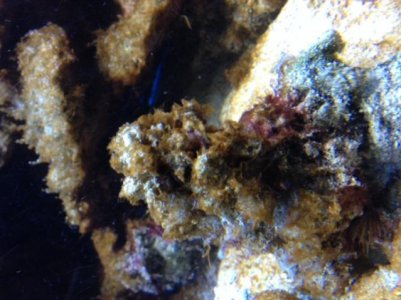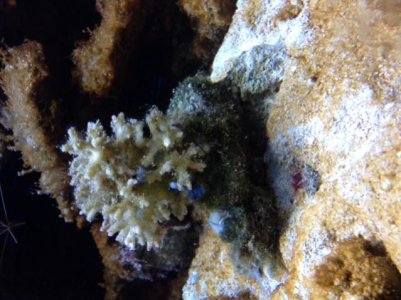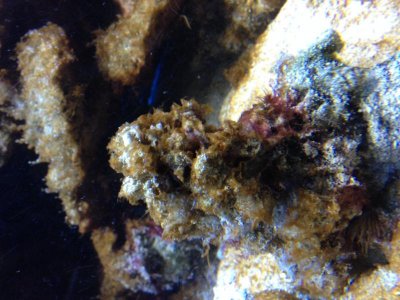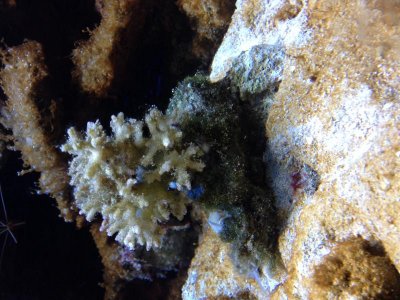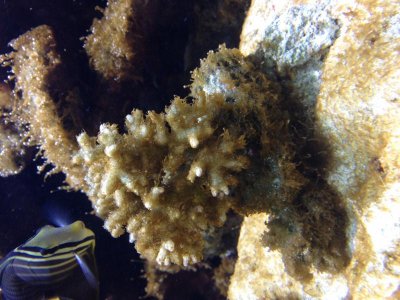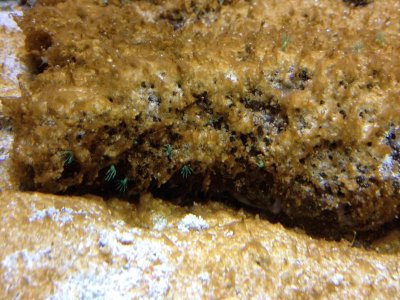MiracleFish
New member
100% love the challenge you will be surprised at the difference we can make. Im about to get some more really good after pics
since we are months into this, no hurry to start. Id like a good amount of the exchange to be prep work and brainstorms before we start.
You can see from this thread we haven't spent much if any time actually id'ing anything except the obvious targets. because its not needed to kill them, thats the point of the thread...we just clean tanks and let others do the id'ing to learn from as needed.
Your target is highly susceptible to this treatment and the rocks will show a huge improvement fast and Im not sure what it is
but Ive seen this before, lots of times, and as predictions go on this thread it will respond well to our treatment.
initial brainstorms:
some of the anemones could be stressed from the treatment although there isnt a big history of them dying. not much else is ultra sensitive in that tank, since the substrate is fairly clean this is easier than some jobs where the substrate is loaded with various algae, rock alone pretty much intertwined with coral is about what we have been doing the whole time here. so let me start by asking, is 100% of the rock glued and unremovable?
is there any part you can take out, externally spot treat, let sit, rinse, and put back in without hand removing the algae? you can see from recent pages, before undertaking big tasks a test rock is awesome, it gives us the expected kill time to expect for the rest of the tank before you put 11 hours of straight work into it.
The drain and treat we talked about in pm:
yes thats a real valid option here, and probably the best way not to stress any of the corals in the tank. The technique where we dose underwater is always, always, second best to any treatment where the water isn't present to distribute the peroxide around the tank onto the non targets.
any amount of repeat work you are willing to do for rock structure removal, what can be, or repeated tank drains is ideal in fixing your problem. brainstorm that with me and let us know about removable test rocks
on the tank drain I was meaning to drain it to where you can access a target area, dose, pour some water back on that spot, then change out a portion of the leftover water to export out the peroxide.
since this is a large tank, it is absolutely possible to drain tank, spot treat, refill, and let a calculated safe amnt of peroxide simply dissipate from the tank without all the extra changes.
that last pic, the zoanthid rock on the foreground substrate, you can lift that one out right? if you can use that as a test rock, remove and apply peroxide avoiding the zoanthids as best you can right on the algae, let sit two mins out of the tank, rinse and place back in. if some contacts the zoanthids its ok, but for good practice start applying around the corals using targeting applicators
This response put a huge smile on my face just from the first sentence:beer:
In the picture shown below, Ive circled rocks that can be removed. The rock directly in the middle that is to the right of the cave and the rock all the way to the left are the only 2 I'm willing to test because of how simple they are to remove. The rest of the rocks are certainly a b*tch to move but is certainly possible. but the other main parts of the algae cannot be removed because of the glue.
This tank isn't as big as you would think it is too, its only a 20g long. (Atleast I dont think its big). And that last picture, the rock isnt very moveable at all that Im looking at it a second time. However, the rock with the Dragon eyes on them is easy to remove and would a solid choice also for spot treatment.














